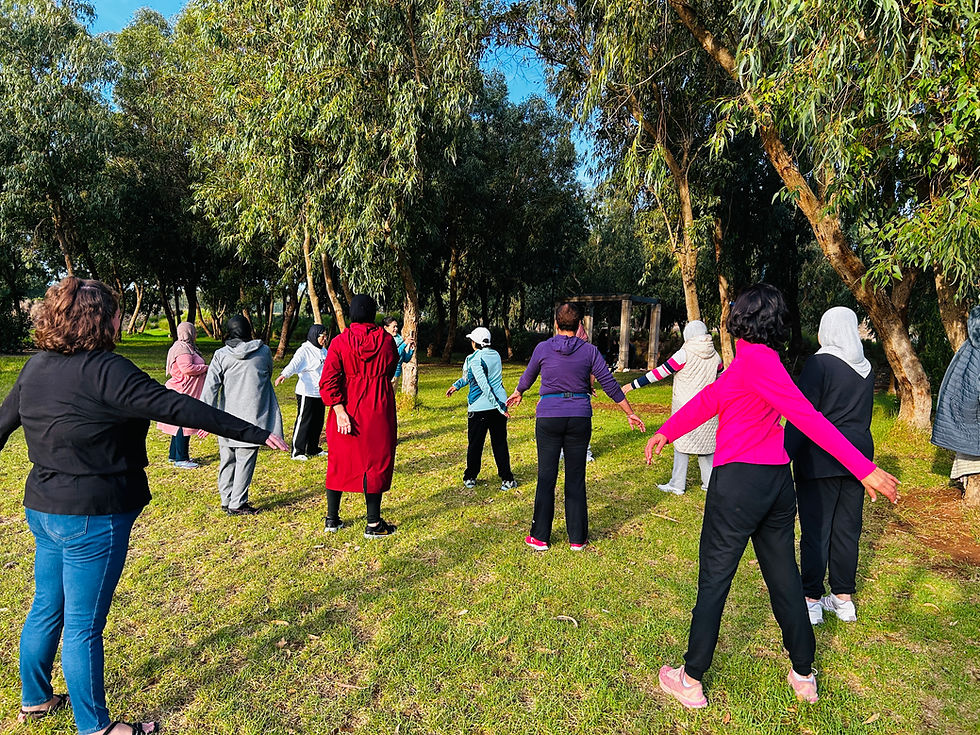A Day Between Continents: Ceuta and Tangier
- Allyson Gilbert
- Sep 13
- 2 min read
This week I took my first day trip out of Rabat, traveling north to explore Ceuta and Tangier. It was a day full of contrasts—sleek modern trains, crowded shared taxis, and a border that could be crossed on foot in just minutes.
The day began with the Al Boraq, Morocco’s high-speed train. Covering the distance from Rabat to Tangier in under two hours, it was fast, quiet, and remarkably smooth. Watching the countryside race by at 320 km/h made me appreciate how much easier travel across Morocco can be with this link.
From Tangier, I joined others in a grand taxi to make the trip toward the border of Ceuta. These shared cars wait until they’re completely full before leaving, which means six passengers packed tightly together—hot, crowded, and a little chaotic, but also a true part of daily life here.
Crossing into Ceuta was unlike anything I’ve experienced before. On the Moroccan side, the scene was noisy and bustling, with people moving in every direction, cars squeezed into impossible spaces, and vendors nearby. Then, after a short walk, a passport check, and a quick step forward, I was in Spain.
The change was immediate—not better or worse, just different. Suddenly I was surrounded by Spanish signs, cafés offering tapas, and people speaking rapid-fire Spanish instead of Darija or French. Even the architecture shifted, with plazas and buildings that wouldn’t feel out of place in Madrid or Barcelona. Yet the Mediterranean light, the surrounding mountains, and the mix of cultures reminded me I was still in North Africa. It was fascinating how similarities and differences coexisted so strongly, and how geography doesn’t always dictate identity. In the span of a few minutes, I felt both close to Morocco and very far away.

On the way back, I spent time in Tangier, a city perched dramatically where the Mediterranean meets the Atlantic. If Ceuta felt like a collision of Europe and Africa, Tangier felt like a city that has always lived comfortably between worlds. Walking through the medina and souk, I wound through narrow alleys crowded with colorful stalls, the air heavy with the scent of spices and fresh fruit. Vendors called out, children darted through the lanes, and the hum of bargaining created its own rhythm.

From there, I wandered toward Tangier’s wider boulevards and waterfront. The contrast between the lively, winding medina and the open view of the sea was striking. Standing at the port, looking out toward both the Mediterranean and Atlantic, it was easy to see why Tangier has long captured imaginations—traders, writers, and travelers all drawn to this edge-of-two-worlds city. Even in just a few hours, Tangier felt layered: historic and modern, Moroccan and international, chaotic and calm.
By evening, I was back on the Al Boraq heading toward Rabat, tired but reflective. In just one day, I had stepped across continents, shifted between languages and currencies, and seen both the modern and traditional ways people move. Travel doesn’t need to be long to be eye-opening—sometimes a single day is enough to expand the way you see the world.




Comments